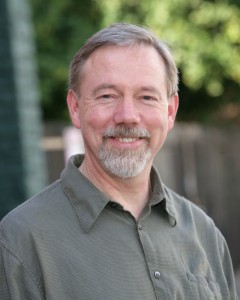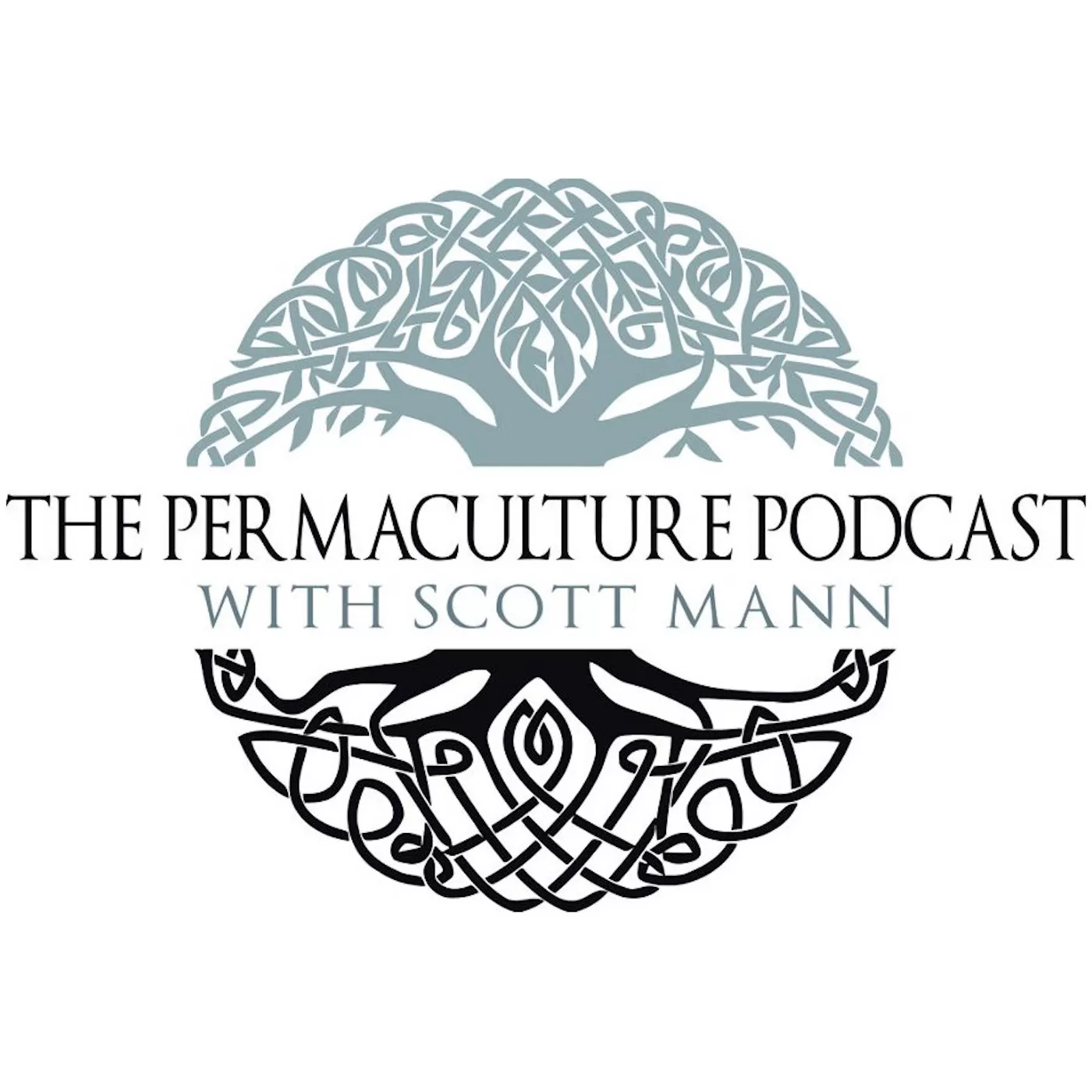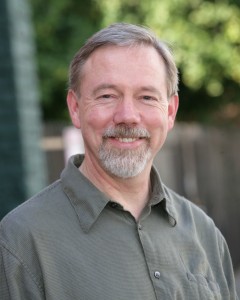My guest for this episode is Toby Hemenway, author of the longstanding favorite book on ecological design Gaia’s Garden. His next blockbuster The Permaculture City, was recently released by Chelsea Green. This latest volume, focusing on urban landscapes, forms the basis for the conversation today. We work our way through the book and along the way discuss permaculture as a decision making system, and the importance of what permaculture practitioners have, for so long, called the invisible structures: our social and economic systems. For patreon supporters, stick around after the end of the interview, as there is a piece I cut from the piece for broadcast that I included at the end for you to hear. Before we begin, I’d like to thank everyone who had help to make this show a reality. If not for every one of the listener supporters I wouldn’t be able to keep going, as all of this work is made possible by you. If you’ve thought about giving, do so now. If you would like to be part of the members who are part of the monthly program, become a Patreon supporter and receive a number of benefits, including early access to shows and subscriber only podcasts.  You can find out more about Toby's work at patternliteracy.com. His latest book, The Permaculture City, is currently available through Chelsea Green. If you choose to order use the link above and help support the podcast at the same time. Before we get to my thoughts, a class announcement. October 2 - 11, 2015 Dave Jacke is teaching a 9 day intensive Forest Garden Design Course at Feathered Pipe Ranch, near Helena Montana. This is the first time in three years this course has been offered in the United States. The all inclusive class allows students to learn how to mimic forest ecosystems that include a number of valuable characteristics including stability and resilience in a changing world. As the recent interviews with Dave this have expressed, you can also expect this course to explore the human side of design including the social and economic elements, as discussed with Toby as part of today’s interview. Participants will the opportunity to design multiple forest gardens, including one for the course site, as well as another for the 6th Ward Forest Garden Park, as discussed with Caroline and Jesse during the conversation with them on Social System Design. Find out more at: https://www.insideedgedesign.com/upcoming-events.html Now then, my thoughts at the moment. To me this book and the interview you just heard are vital to changing the conversation about permaculture away from just the landscape and growing food, as these are problems that are technically solved. We know how to raise up plants from seed, cutting, or graft. We understand the techniques to use in a wide variety of situations in any climate, even if that means making modifications to the land through ponds or swales, or creating physical structures such as greenhouses or stone walls as thermal mass. Conventional and organic agriculture have a lot of information for us to pull from, as do the rapidly growing fields of agro-forestry and agro-ecology. Where things go sideways is in reaching a larger audience with these ideas, not just in mainstream culture, but also in the permaculture community at large. The landscape is the focus and gets many of us stuck there. Myself and, as you heard, Toby as well. In the beginning this is the place it all starts. Plants. Animals. Food. Fuel. Fiber. Medicine. They form our materials and techniques and yields. These are all easy to see and engage in. But now, 40 years since the beginning we need to go back and dig through Mollison’s big black book of permaculture and remember Chapter 14: Strategies for an Alternative Nation. We need to learn how to build and work in community with one another. Now that the thorny pioneers have blazed a trail into the depths of the jungles, plains, and cities, and there set down roots, we have flourished in the shade of their experience and the work that came before us long enough. Now the specialists can come in. The growers, the builders, the organizers, and the communicators, to fill in the gaps and expand to reach all aspects of human life. We have the potential for permanent human agriculture, now let’s work on building that permanent human culture, and retain the aspects of civilization that matter to us. Thankfully we can do so using the same system of design as those who came before us, and show others how to create a different world. We can tell the stories of how what will come can be different from what has been and what is. Together, though climate change and other obstacles may seem insurmountable, we can bring prosperity and abundance to all life on earth. We can get the next story right and, with it, get the future right. I am hopeful for what will happen next, as is a recurring theme in my work as of late on engaging what was once seen as invisible. It was quite an experience to hear what Toby had to say on this subject, given his many years of experience and the place of respect he holds in the community. The Permaculture City is a fundamental resource that I recommend everyone who is listening read. If this interview is your first exposure to permaculture and you liked Toby’s perspective get a copy of Gaia’s Garden, read it, and then read The Permaculture City. If you’re someone who finds their thoughts continually revolving around the land, read The Permaculture City and see the broader scope of decision making that permaculture can help us engage in. For those of you already working on issues of social and economic systems, especially in the urban environment, pick up a copy and know that you are not alone in your work and there are many people stepping out from what was to create a new now. Along the way, wherever you go, I am here to lend you a hand. To walk beside you until such time as our paths part. If I can be of service to you in any way, get in touch. Email: The Permaculture Podcast Call: Skype: permaculturepodcast You can also send me a letter, as I do so love receiving mail in the post. The Permaculture Podcast The Permaculture Podcast As we draw this to a close, on Wednesday, August 19, 2015, I’m going to be attending a potluck in Berea, Kentucky for an evening discussion about permaculture, being organized by Michael Beck of The POOSH. Though short notice, once I have a flier for that event I’ll pass it around if you are in the area and able to attend. That event kicks off my time in Kentucky, as I’ll be at Radicle Gathering, in Bowling Green, August 20 - 23, 2015. Come out and join me, and members of The POOSH, for a weekend of workshops, entertainment, and community building. Tickets are currently on-sale and the entire weekend is only $25 for adults, those 16 and under get in for free. My deepest thanks to Meg Harris for being part of the team organizing this event and inviting myself, Eric Puro, and all the other presenters and musicians for this weekend. It’s going to be a blast. Find out more at RadicleGathering.com. With that, so comes the end of the episode. There is a short episode planned for Monday, August 10. Until then spend each day creating a better world, the world you want to live in, by taking care of earth, your self, and each other.
You can find out more about Toby's work at patternliteracy.com. His latest book, The Permaculture City, is currently available through Chelsea Green. If you choose to order use the link above and help support the podcast at the same time. Before we get to my thoughts, a class announcement. October 2 - 11, 2015 Dave Jacke is teaching a 9 day intensive Forest Garden Design Course at Feathered Pipe Ranch, near Helena Montana. This is the first time in three years this course has been offered in the United States. The all inclusive class allows students to learn how to mimic forest ecosystems that include a number of valuable characteristics including stability and resilience in a changing world. As the recent interviews with Dave this have expressed, you can also expect this course to explore the human side of design including the social and economic elements, as discussed with Toby as part of today’s interview. Participants will the opportunity to design multiple forest gardens, including one for the course site, as well as another for the 6th Ward Forest Garden Park, as discussed with Caroline and Jesse during the conversation with them on Social System Design. Find out more at: https://www.insideedgedesign.com/upcoming-events.html Now then, my thoughts at the moment. To me this book and the interview you just heard are vital to changing the conversation about permaculture away from just the landscape and growing food, as these are problems that are technically solved. We know how to raise up plants from seed, cutting, or graft. We understand the techniques to use in a wide variety of situations in any climate, even if that means making modifications to the land through ponds or swales, or creating physical structures such as greenhouses or stone walls as thermal mass. Conventional and organic agriculture have a lot of information for us to pull from, as do the rapidly growing fields of agro-forestry and agro-ecology. Where things go sideways is in reaching a larger audience with these ideas, not just in mainstream culture, but also in the permaculture community at large. The landscape is the focus and gets many of us stuck there. Myself and, as you heard, Toby as well. In the beginning this is the place it all starts. Plants. Animals. Food. Fuel. Fiber. Medicine. They form our materials and techniques and yields. These are all easy to see and engage in. But now, 40 years since the beginning we need to go back and dig through Mollison’s big black book of permaculture and remember Chapter 14: Strategies for an Alternative Nation. We need to learn how to build and work in community with one another. Now that the thorny pioneers have blazed a trail into the depths of the jungles, plains, and cities, and there set down roots, we have flourished in the shade of their experience and the work that came before us long enough. Now the specialists can come in. The growers, the builders, the organizers, and the communicators, to fill in the gaps and expand to reach all aspects of human life. We have the potential for permanent human agriculture, now let’s work on building that permanent human culture, and retain the aspects of civilization that matter to us. Thankfully we can do so using the same system of design as those who came before us, and show others how to create a different world. We can tell the stories of how what will come can be different from what has been and what is. Together, though climate change and other obstacles may seem insurmountable, we can bring prosperity and abundance to all life on earth. We can get the next story right and, with it, get the future right. I am hopeful for what will happen next, as is a recurring theme in my work as of late on engaging what was once seen as invisible. It was quite an experience to hear what Toby had to say on this subject, given his many years of experience and the place of respect he holds in the community. The Permaculture City is a fundamental resource that I recommend everyone who is listening read. If this interview is your first exposure to permaculture and you liked Toby’s perspective get a copy of Gaia’s Garden, read it, and then read The Permaculture City. If you’re someone who finds their thoughts continually revolving around the land, read The Permaculture City and see the broader scope of decision making that permaculture can help us engage in. For those of you already working on issues of social and economic systems, especially in the urban environment, pick up a copy and know that you are not alone in your work and there are many people stepping out from what was to create a new now. Along the way, wherever you go, I am here to lend you a hand. To walk beside you until such time as our paths part. If I can be of service to you in any way, get in touch. Email: The Permaculture Podcast Call: Skype: permaculturepodcast You can also send me a letter, as I do so love receiving mail in the post. The Permaculture Podcast The Permaculture Podcast As we draw this to a close, on Wednesday, August 19, 2015, I’m going to be attending a potluck in Berea, Kentucky for an evening discussion about permaculture, being organized by Michael Beck of The POOSH. Though short notice, once I have a flier for that event I’ll pass it around if you are in the area and able to attend. That event kicks off my time in Kentucky, as I’ll be at Radicle Gathering, in Bowling Green, August 20 - 23, 2015. Come out and join me, and members of The POOSH, for a weekend of workshops, entertainment, and community building. Tickets are currently on-sale and the entire weekend is only $25 for adults, those 16 and under get in for free. My deepest thanks to Meg Harris for being part of the team organizing this event and inviting myself, Eric Puro, and all the other presenters and musicians for this weekend. It’s going to be a blast. Find out more at RadicleGathering.com. With that, so comes the end of the episode. There is a short episode planned for Monday, August 10. Until then spend each day creating a better world, the world you want to live in, by taking care of earth, your self, and each other.



